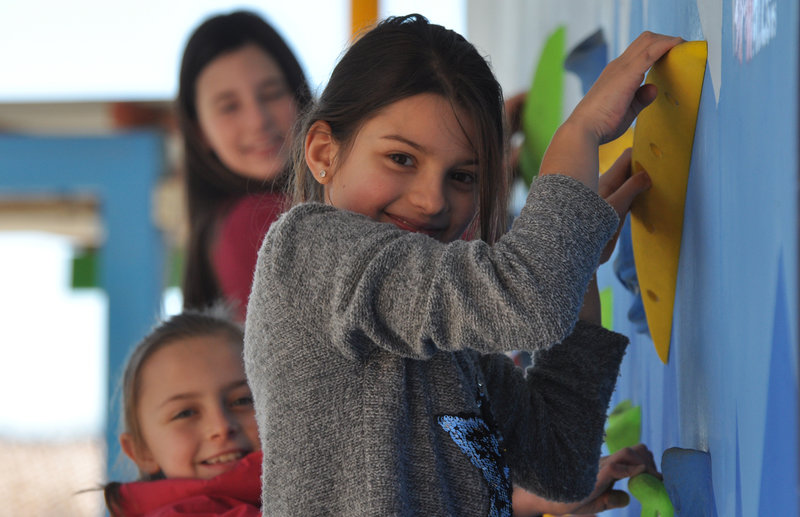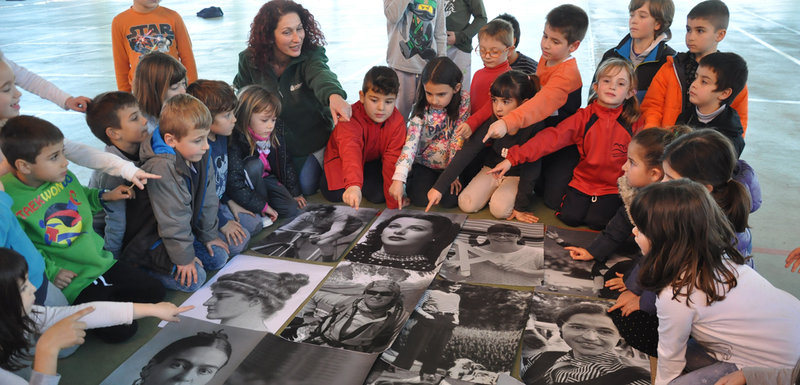Extracurricular activities under debate
Experts highlight the positive impact on school results and social skills, despite concerns about equal access and the need to offer reasonable prices
With the school year underway, many families start thinking about which extracurricular activities to sign their children up for. The options are broad, with activities in everything from sport, art and English to robotics and maths. Yet, as every year, the start of these activities brings with it a number of questions. Do they really benefit children, or just overload them with work? Do they increase inequality because some families can’t afford them? Do they have an impact on children’s educational progress?
The range of activities offered in public and private schools makes it difficult to pin down the percentage of pupils who do some type of after school activity, although the Fundesplai organisation estimates the number at around 60%. According to the 2013 Catalonia Health Survey, 64% of under-15s do some sporting extracurricular activity, a figure that drops to 39% for non-sports activities. The 2014 Ombudsman’s report warned of the need to recognise such activities as a fundamental part of the right to education.
The head of the Jaume Bofill Foundation, Ismael Palacín, thinks extracurricular activities “make up a very relevant sphere”, and says the choice of activity made by families can be due to the fact they are either looking to strengthen their children’s skills or compensate their weaknesses. There is also a social motivation, “to expose the child to other relationships”, or make up for a lack of physical activity. “Families see them as important, and the proof is the hours and money they invest in them, but a consequence can be that they create inequality, depending on the money available to families,” warns the expert.
Social skills
A Jaume Bofill study headed by doctor of political science and social transformation, Sheila González, concludes that formal learning programmes at school have more impact on academic results than artistic or sporting activities. Yet, the latter “show positive results in raising psycho-social skills.” The impact is, the study says, greater among low-performing pupils or those with a low socio-economic level. “The right to learning needs redefining,” says Palacín, “which means providing hours at affordable prices.”
Fundesplai, which offers almost 10,000 services to 1,113 schools, is clear that the quality of extracurricular activities is as important as providing equal access to them. “Extracurricular activities are important,” says Froilán Salgado, assistant manager of the foundation’s services and management. Salgado stresses the interest of collective learning, which is why the activities they offer promote gaining knowledge based on relationships between children of different ages. He also highlights the importance of physical activity and “emotional education in terms of social skills.” “We aim to help children become better people,” he adds. As for the possible excess of hours spent on them, he thinks that if families regulate timetables well “it doesn’t have to be a problem.”
To provide access for disadvantaged families, Fundesplai gives out almost 20,000 grants a year, “as everyone in class has the right to guaranteed education, but outside there are a series of educational opportunities that are not within everyone’s reach.” Salgado points out that 31% of children are at risk of poverty and that by the age of 12 there can be a difference of 6,000 hours of learning between those with more educational opportunities and those without.
Lidón Gasull, director of the Catalan federation of parent-teacher associations (FaPaC), also believes that extracurricular activities are important as a “space for socialisation and the resolution of conflicts among children, for fostering sport, enjoying reading and play, and also as a meeting place for families.” Gasull warns that these activities should not serve “to prolong the school day and substitute formal learning.” She also warns that if this happens, it can introduce a factor of segregation in extracurricular activities like English and maths.
feature
The importance of the local
Initiatives like Educació 360, associated with the Jaume Bofill Foundation, see the local world as key in promoting full-time education to reduce inequality. Some authorities have been working on this for a while, such as El Prat de Llobregat, which has a policy to help pupils have more access to extracurricular activities. The council has a service to foster participation in local schools, and 1,400 pupils benefit from support so they can do extracurricular activities. A social committee evaluates risk factors. “The committee’s primary function is to accompany the pupil in community work that involves the school, the family and local organisations,” says Cristina Company, an education official on the council. Depending on the pupil, many situations of risk are reversed, she says. The programme is 10 years old, and has gone from helping just 50 pupils in its first to year now helping over a thousand.




